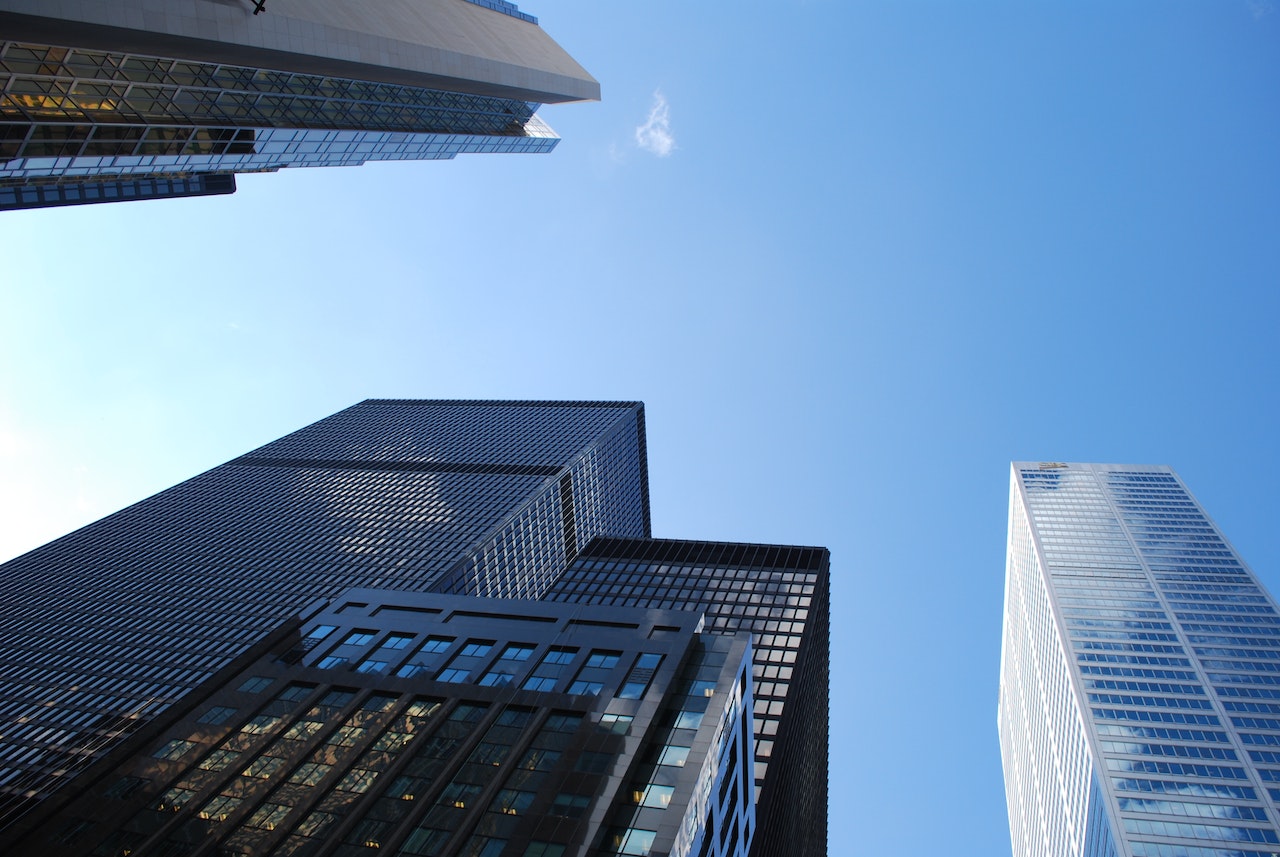The Role Of Architects In Promoting Sustainable Communities And Environments - Building A Better World
The role of architects in promoting sustainable communities and environments has become a priority for many nations and communities around the world as people realize the consequences of human activities on the environment.
Author:George EvansMar 15, 202371.4K Shares1M Views

The role of architects in promoting sustainable communities and environmentshas become a priority for many nations and communities around the world, as people realize the consequences of human activities on the environment.
As architects, we have a responsibility to promote sustainable communities and environments by designing buildings and spaces that are environmentally friendly and contribute to a better quality of life for their users.
In this article, we will explore the role of architects in promoting sustainable communities and environments, and how we can contribute to a more sustainable future.
The Impact Of Architecture On The Environment
Buildings have a significant impact on the environment, from the energy used to construct them to the energy required to operate and maintain them.
According to the United Nations, buildings are responsible for 40% of global energy consumption, 30% of greenhouse gas emissions, and 40% of global waste. This means that architects have a significant role to play in reducing the environmental impact of buildings.
Designing Sustainable Buildings
Designing sustainable buildings involves considering the environmental impact of every aspect of the building's lifecycle, from construction to demolition.
Architects can incorporate sustainable design features such as energy-efficient lighting and heating systems, renewable energy sources, green roofs and walls, and rainwater harvesting systems.
In addition, architects can design buildings that are adaptable and flexible, allowing them to be easily modified to meet changing user needs.
The Role Of Architects In Promoting Sustainable Communities And Environments
Architects can play a crucial role in creating sustainable communities by designing buildings and spaces that promote social interaction and a sense of community.
This can include designing public spaces such as parks and plazas that encourage people to gather and interact, and designing mixed-use developments that provide a range of services and amenities within walking distance.
Architects can also promote sustainable transportation by designing buildings and communities that are easily accessible by public transportation, biking, and walking. This can include designing bike lanes and pedestrian pathways, as well as locating buildings near public transportation hubs.
The Importance Of Collaboration
Architects cannot promote sustainable communities and environments on their own. Collaboration with other professionals such as engineers, contractors, and developers is essential to ensure that sustainable design features are incorporated into the building's design and construction.
Architects must also collaborate with the community and stakeholders to ensure that the building and its surroundings meet the needs of the community.
The Role Of Education
Education is crucial to promoting sustainable communities and environments. Architects can play a role in educating their clients and the public about sustainable design features and the benefits of sustainable building practices.
This can include providing information about energy-efficient technologies, green building materials, and the lifecycle cost savings of sustainable design.
Architects can also promote sustainability through education by working with universities and schools to promote sustainable design practices and providing opportunities for students to learn about sustainable design principles and practices.
The Role Of Policy
Policy plays a significant role in promoting sustainable communities and environments.
Architects can advocate for policies that encourage sustainable building practices, such as tax incentives for green buildings, building codes that require energy-efficient design features, and zoning laws that promote mixed-use developments and encourage walking and biking.
Architects can also work with policymakers to promote sustainable transportation policies, such as investing in public transportation and designing communities that are accessible to public transportation and bike lanes.
The Evolution Of Sustainable Design In Architecture
Sustainable design principles have evolved, and architects have played a significant role in driving this evolution.
The concept of sustainable design has its roots in the 1970s when concerns about environmental pollution and resource depletion led to the development of green design principles.
Over the years, sustainable design has evolved to encompass a broader range of principles, such as energy efficiency, water conservation, and social responsibility.
Today, architects are exploring new materials, technologies, and design strategies to create buildings that are environmentally friendly, socially responsible, and economically sustainable.
The Benefits Of Sustainable Design For Building Owners And Occupants
Sustainable design offers many benefits to building owners and occupants. First and foremost, sustainable buildings are healthier and more comfortable for occupants.
Buildings that incorporate green design principles have better indoor air quality, natural lighting, and thermal comfort, which can lead to improved productivity and fewer health problems.
Sustainable design also leads to energy cost savings for building owners. Energy-efficient buildings use less energy, which means lower utility bills and reduced operating costs over time.
Sustainable buildings also have higher resale values, as they are more desirable to buyers who prioritize environmental responsibility and energy efficiency.

Architecture and Sustainable Environment
The Economic Benefits Of Sustainable Design For Communities
Sustainable design has significant economic benefits for communities as well. Sustainable buildings create local jobs, particularly in the manufacturing and installation of green building materials and technologies.
They also stimulate economic growth by attracting businesses and residents who value sustainable living. Sustainable buildings can also reduce a community's reliance on imported energy sources, which can save money and reduce the risk of energy price volatility.
Additionally, sustainable design can improve a community's resilience to natural disasters, which can save lives and reduce the cost of disaster recovery efforts. All of these economic benefits make sustainable design a valuable tool for promoting economic development and community well-being.
People Also Ask
What Is LEED Certification?
LEED certification is a rating system developed by the U.S. Green Building Council that recognizes buildings for their sustainability performance.
What Is Biophilic Design?
Biophilic designis a design approach that seeks to incorporate natural elements, such as plants and natural light, into the built environment to improve occupant well-being.
How Can Architects Promote Sustainable Design In Their Communities?
Architects can promote sustainable design in their communities by advocating for sustainable building policies and regulations, engaging with stakeholders to promote sustainable design practices, and educating future architects on sustainable design principles.
How Can Sustainable Design Benefit Local Economies?
Sustainable design can benefit local economies by creating jobs in the manufacturing and installation of green building materials and technologies, attracting businesses and residents who value sustainable living and reducing a community's reliance on imported energy sources.
What Are Some Challenges Associated With Sustainable Design?
Challenges associated with sustainable design include the higher upfront cost of green building materials and technologies, difficulty in balancing sustainability with aesthetics and functionality, and navigating complex building codes and regulations.
Conclusion
The role of architects in promoting sustainable communities and environments is crucial in today’s world. By designing buildings and spaces that are environmentally friendly, socially responsible, and economically sustainable, architects can help create a better quality of life for their users and contribute to a more sustainable future for our planet.
Collaboration, education, and policy advocacy are essential to achieving sustainable design practices and promoting sustainable communities and environments.
Jump to
The Impact Of Architecture On The Environment
Designing Sustainable Buildings
The Role Of Architects In Promoting Sustainable Communities And Environments
The Evolution Of Sustainable Design In Architecture
The Benefits Of Sustainable Design For Building Owners And Occupants
The Economic Benefits Of Sustainable Design For Communities
People Also Ask
Conclusion

George Evans
Author
George Anderson, an exceptional architectural designer, envisions and brings to life structures that transcend the realm of imagination. With an unwavering passion for design and an innate eye for detail, George seamlessly blends form and function, creating immersive spaces that inspire awe.
Driven by a deep appreciation for the interplay of space, light, and materials, George's innovative approach redefines the possibilities of architectural design. His visionary compositions leave an indelible mark, evoking a sense of wonder and transforming the built environment.
George Anderson's transformative designs and unwavering dedication continue to shape the architectural landscape, pushing the boundaries of what is possible and inspiring generations to come.
Latest Articles
Popular Articles
